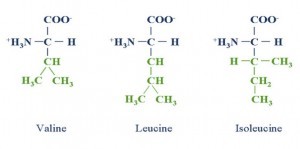Well we're less than two weeks from Christmas. And that means the parties, dinners and celebrations will be in full effect. Typically we consider the extra calories and sugar during Christmas. But what about the alcohol? How Bad Is Alcohol For You? A colleague with the NBA Hawks, Marie Spano, MS, CSCS, RD, CSSD, shared something on her social media. And I've going to share it with you as well. Alcohol interferes with muscle growth, especially in type II muscle fibers. These are your explosive force-generating muscle fibers 🏋🏾♂️that help you sprint, jump and lift weights. In one study, 1.5 g/kg bodyweight (this is 5-6 glasses of beer for a 155 lb. man; I show you how to calculate this below) consumed after exercise reduced the synthesis of protein in muscle by 37%. When protein (25 grams post exercise and again 4 hours later) was consumed along with alcohol the reduction in muscle protein synthesis was 24%. ❓How Does Alcohol Wreck Your Gains? Alcohol interrupts the transcription of genes involved in muscle growth by impairing IGF-1 signaling and in men but not women, mTOR signaling. Note: alcohol still reduces muscle protein synthesis in women though mTOR signaling is not impaired. Drinking alcohol after resistance training or a game decreases testosterone concentration and bioavailability in men but not women. Studies consistently show an alcohol intake > 1.5 g/kg lowers testosterone in men. 😳 Also, long-term alcohol use decreases the androgen receptor, so even if you have a lot of testosterone circulating, there’s a decrease in your body’s ability to use testosterone. How to Figure Out the Grams of Alcohol in a Drink 1 - Multiple the oz in the drink by the alcohol content. A 12 oz. beer with 6% alcohol has 0.72 oz. of alcohol. Multiple alcohol fluid oz. x 29.57...
BCAAs Not Worth the Investment
- Chris Collins
- Fitness
- 1525 Hits
- 0 Comments
-
I've just gotten back from a family vacation. And it wasn't just Alexandra, the girls and I but my parents, siblings and their kids as well. All in there was 24 of us getting together for a few days in Washington and Idaho. We were there to go to a theme park and waterslides for a few days. At the end of the days we would gather at a restaurant to recount stories and review pictures from our adventures. Next door to one of the restaurants we were going to was a supplement store. And in the window of this supplement store was a cut out a fitness model advertising a particular supplement. In this case the supplement was branched chain amino acids or BCAAs as they're more commonly called. Before we carry on it's important to explain what a BCAA is. Amino acids are the building blocks of protein. Sometimes amino acids are thought of as beads on a string. Which amino acids are present and in which order is part of what determines which protein it will be. Three amino acids in particular have functional groups referred to as 'branched' to help distinguish them from other amino acids. These amino acids are leucine, isoleucine and valine. [caption id="attachment_5548" align="aligncenter" width="300"] The branched chain amino acids valine, leucine and isoleucine. Notice the part in blue is the same for all, only the part in green is different. And for a while it was believed that BCAAs, or even more specifically leucine, was the trigger for protein synthesis. So for someone looking to add some lean mass, get stronger or tone you would need to consume more protein. You could consume 20 grams of whey protein, or 6 grams of BCAAs or 2 grams of leucine. All were thought to be equivalent...
